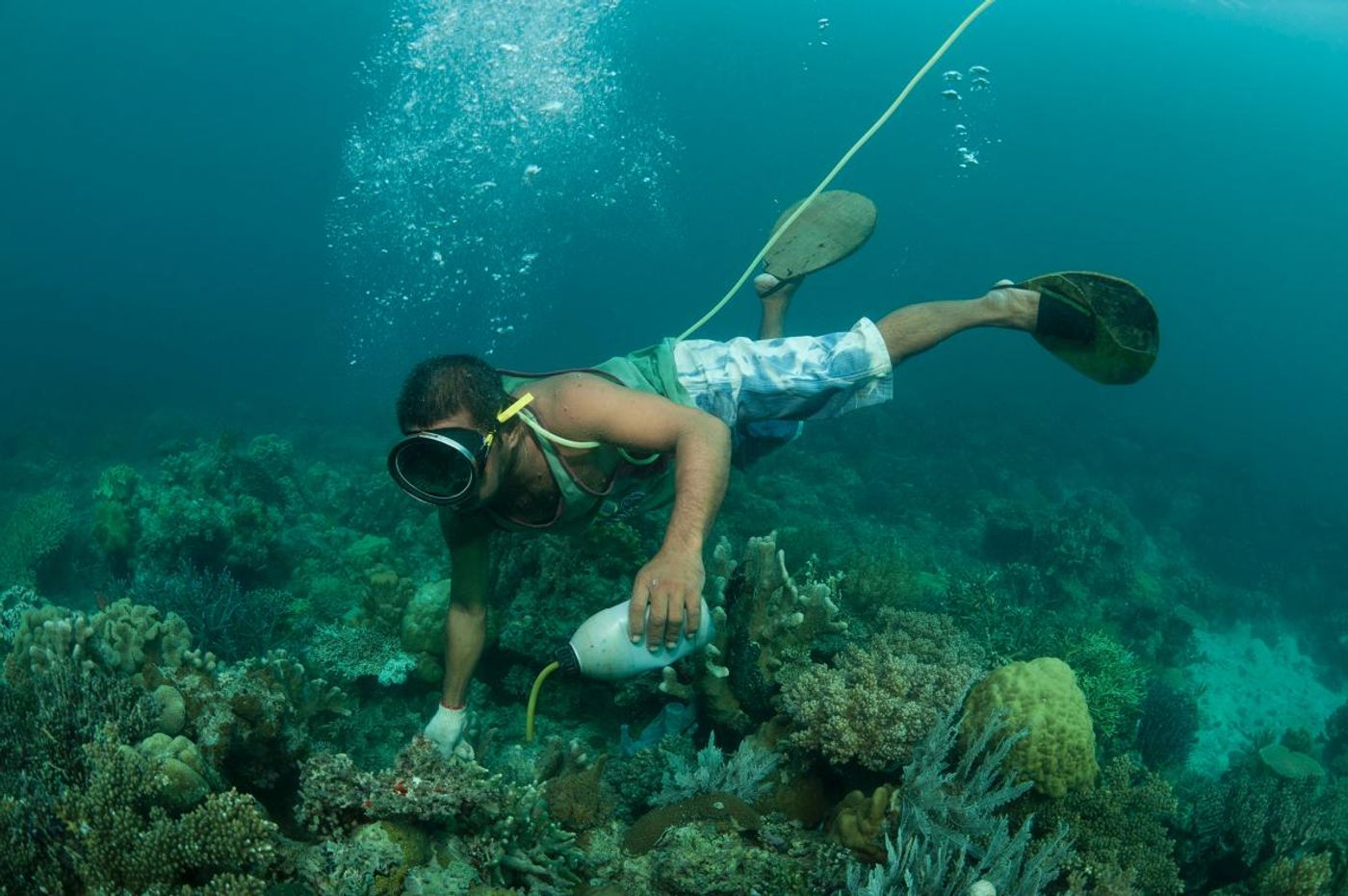Coral reefs are facing more threats than just climate change. Sodium cyanide, which can be crushed and turned into a toxic powder to be sprayed onto fish to stun them for live capture, is damaging reefs all around Southeast Asia and the Pacific. Due to the boom in demand for live fish for aquarium displays, as well as upscale restaurants where you can choose your live fish and watch a chef cook it in front of you, up to 90% of the 12.5 million tropical fish that the US alone imports have been caught using cyanide.
Cyanide is an easy way to catch live fish, which can bring five times more profit than its dead equivalent, because the spray shocks the fish, resulting with “temporary” respiratory distress and loss of balance. However, this temporary shock all too often turns to fatality, sometimes even before the fish has been sold, let alone before it arrives to the dentist's waiting room office.
The marine aquarium trade is currently worth $200 million annually. Fishermen from the Philippines can make $22 per fish, selling the animals to gourmet restaurants in Hong Kong, China, and Singapore. Using cyanide, they are able to catch dozens of fish per day; using a fishing rod they may only catch one or two. The Calamianes Islands provide approximately two thirds of the Philippines´exports of live fish for the international market - in more concrete numbers: up to one ton of live fish are exported every day from these islands.

The grandity of this number is affecting the reefs as well as the people who rely on them for food. When such a vast amount of fish are removed from a reef, the ecology of the ecosystem is disturbed. Furthermore, “Each live fish caught with cyanide destroys about a square yard of coral, according to biologist Sam Mamauag of the International Marinelife Alliance, in the Philippines. Even in lower doses, cyanide can cause coral bleaching and mess with the coral’s biology. Sometimes, the coral is killed outright.” This loss of habitat greatly decreases the survival of other fish species - even those not caught for export. Sam Mamauag of the International Marinelife Alliance (IMA) in the Philippines reports that overall catches are down, as well as the size of caught fish - a tell tale sign of overfishing. Many fishermen in this region rely on the reefs for subsistence fishing. This, combined with growing population in the Philippines, leaves a frightening dilemma.
However, the dilemma is one that should be considered by those countries allowing illegally fished (using cyanide IS illegal) imports. Stricter enforcement are necessary from the US, Hong Kong, and China, for instance, to regulate that cyanide has not been used to capture fish. The US has the power to do so, utilizing the Lacey Act, “which makes it illegal to import any wildlife caught contrary to another country’s laws.” However, like all bureaucratic ongoings, it takes time to get the ball rolling. If you want to help, the next time your doctor’s office goes to buy tropical fish for its aquarium, suggest that they ask for fish bred in captivity. One can also use the free app, Tank Watch, to identify “reef-friendly” species. Many wildlife crimes such as this often go unnoticed by the general public, and only from a large, asserted public pressure will they begin to be regulated.
Sources:
National Geographic,
World Wildlife Fund










